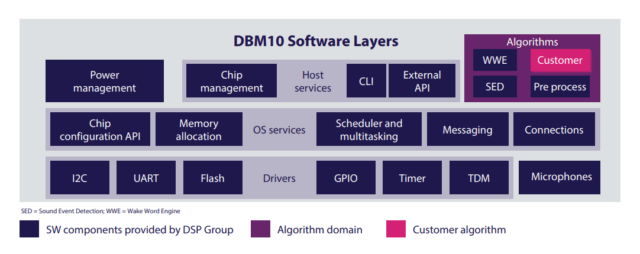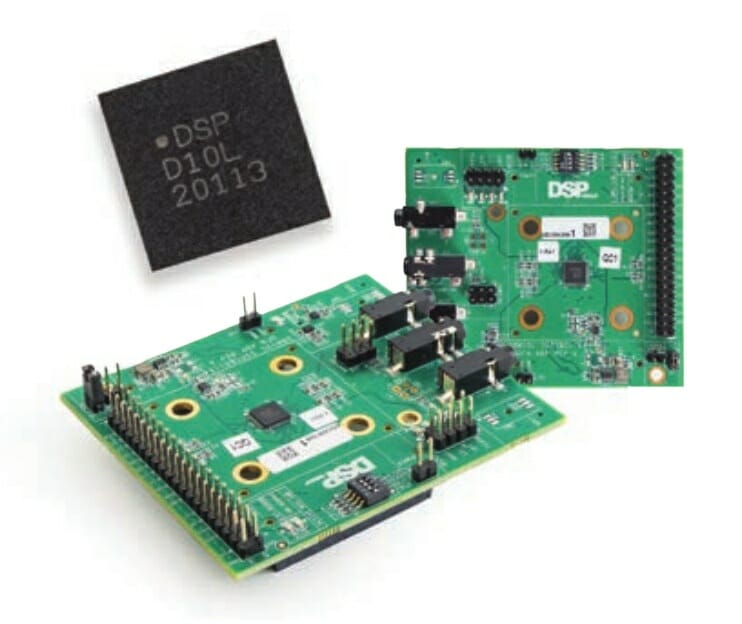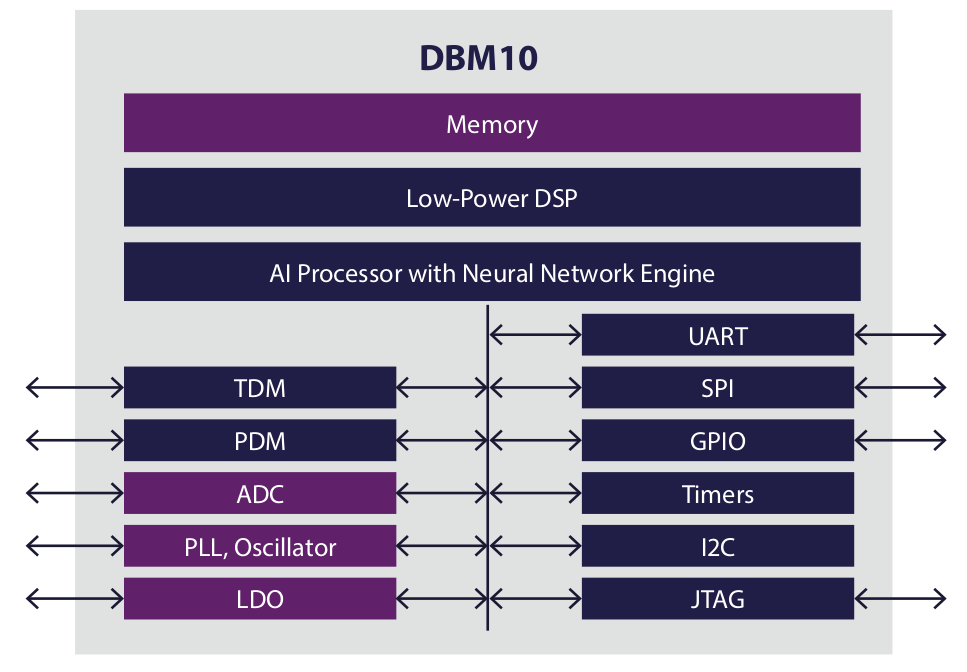DSP Group announced DBM10 a low-power AI/ML-enabled dual-core SoC. The SoC is equipped with a DSP (Digital Signal Processor) and a dedicated nNetLite NN (Neural Network) processor that improves voice and sensor processing and ensures low-power consumption when working with sufficient-sized neural networks.
Key Specifications of NN Processor
- Form factor: ~4 mm2
- Ultra-low-power inference consumption – ~500 µW (typical) for voice NN algorithms
- Runs Hello Edge 30-word detection model @ 1 MHz (125 MHz available)
- Allows porting of large models (10s of megabytes) without significant accuracy loss using model optimization and compression.
DBM10 AI SoC uses the combined functioning of machine learning, voice, and sensor parameters. This includes voice trigger (VT), voice authentication (VA), voice command (VC), noise reduction (NR), acoustic echo cancellation (AEC), sound event detection (SED), proximity and gesture detection, sensor data processing, and equalization. The DBM10 is suitable for battery-operated devices like smartphones, tablets, and wearables. It is even suitable for true wireless stereo (TWS) headsets, and smart home devices like remote controls.
Features of DBM10 AI SoC
- Two serial interfaces: SPI and I2C
- TDM and PDM audio Interface
- UART for serial communication
- GPIOs for MCUs and peripherals
- 32-bit timer and watchdog timer
- Low-Power ADCs for analog microphones
- JTAG port for debugging
- 48-pin Quad Flat No-leads package
Software Framework DBM10 AI SoC
DSP Group provides a software framework with a real-time operating system. It has an internal host for communication with an external master processor running on Linux OS. DBM10 AI SoC also has drivers for processor peripherals and Android/Linux interface. The SoC also comes with an option of standalone master or slave mode, with an external master mode option.

DBM10 AI SoC architecture offers “full flexibility of partitioning innovative algorithms between DSP and NN processor.” It also allows integration of voice and sensing algorithms like “noise reduction, AEC, wake-word detection, voice activity detection, and other ML models”.
We also saw a low-power cost-effective LG8111 AI SoC suitable for image classification/recognition, audio, and control intelligence applications. However, the DBM10 AI SoC is expected to be suitable for AI voice-based applications. Both the SoCs have their respective parent company’s neural processing component. The LG chip also promised low-latency and flexible cloud support.

We can see an image of the development board on the product datasheet, but there is no information available on the site at this point in time. However, the DSG Group says “DBM10 devkit is supported by embedded memory, as well as serial and audio interfaces for communication with other devices in the system, such as an application processor (AP), codecs, microphones, and sensors.” Hence, the SoC should be easily compatible with many external devices.
There is no information about the exact date of release of the SoC at this point in time. More details may be found in the official press release and the official product page.

Saumitra Jagdale is a Backend Developer, Freelance Technical Author, Global AI Ambassador (SwissCognitive), Open-source Contributor in Python projects, Leader of Tensorflow Community India and Passionate AI/ML Enthusiast
Support CNX Software! Donate via cryptocurrencies, become a Patron on Patreon, or purchase goods on Amazon or Aliexpress





